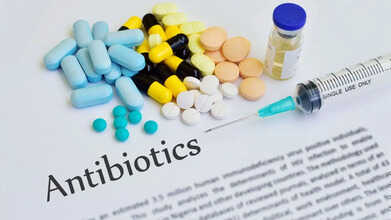- Health Conditions A-Z
- Health & Wellness
- Nutrition
- Fitness
- Health News
- Ayurveda
- Videos
- Medicine A-Z
- Parenting
- Web Stories
What Types Of Music Help You Fall Asleep The Easiest?

Music For Sleep (Credit: Canva)
There is an uncanny similarity between children's lullaby "Twinkle Twinkle Little Star" and BTS' energetic K-pop hit "Dynamite"-both are the most popular songs when it comes to making people fall asleep. New research published in the journal
PLOS ONE sheds light on this unexpected trend, revealing that songs across a wide range of genres, from soothing lullabies to upbeat pop, are commonly used to aid sleep.
Music As A Sleep Aid: A Widespread Habit
While using music to help fall asleep is a well-known practice, there has been little detailed research on the specific types of music people prefer for this purpose. According to the study, previous surveys show that nearly half of people use music to aid their sleep. The researchers sought to explore the global scope of this practice by analyzing data from Spotify, a music streaming platform used in 92 countries. Spotify’s vast user base, spanning all ages, provided a unique opportunity for researchers to investigate sleep music preferences on a global scale.
What Types of Music Are Most Popular for Sleep?
To understand what music listeners turn to for rest, researchers analyzed Spotify playlists containing variations of the word "sleep" in any language. They excluded non-music content such as podcasts and nature sounds and focused on tracks from playlists with over 100 followers. After refining their selection, they analyzed 986 playlists and 130,150 unique tracks.
The results showed that ambient music was the most common type of sleep music, aligning with expectations. However, there was also a surprising prevalence of contemporary pop and indie hits. Classical and instrumental music, often touted as ideal for sleep, appeared less frequently than pop or rap.
Why Do People Choose Certain Types of Music for Sleep?
Dr Alex Dimitriu, a psychiatrist and sleep medicine expert, speaking to a leading media house suggests that even energetic or upbeat songs can help with sleep under the right conditions. According to him, the brain prefers predictable patterns, so songs that are structured and free of sudden tempo changes can promote relaxation. Familiarity with the songs also plays a role in aiding sleep, as novelty can keep the brain alert.
Other health experts have added that the emotional tone of the music, rather than its rhythm, determines whether it helps people relax. While some find upbeat music calming, others might be drawn to more soothing genres.
Is Listening To Music Before Bed A Good Idea?
Many people turn to music as a way to wind down, but how effective is it for improving sleep quality? Experts agree that music can be a powerful tool, as long as it isn’t too stimulating. "Music is great for falling asleep as long as it isn’t too exciting," said Dr Dimitriu. Music can promote a relaxed, meditative mindset, making it easier to transition into sleep.For healthy sleep, Dimitriu recommends avoiding headphones that might need to be removed during the night or cause discomfort, using a sleep timer to automatically turn off the music, and following good sleep hygiene practices such as limiting screen time before bed and maintaining a consistent sleep schedule.
ICMR Flags Misuse Of Critical Drugs, Suggests New Antibiotics Be Sold Only In Hospitals

Credits: Canva
India’s top health research body has suggested that new antibiotics launched in the country should only be made available through select hospital pharmacies. The advice comes amid rising fears of misuse, overuse, and growing resistance to even the most critical ‘last-resort’ antibiotics.
In a recent paper published in the Journal of Global Health, ICMR’s antimicrobial resistance (AMR) division, along with other researchers, warned that while new antimicrobials bring hope, past experience shows resistance often develops quickly.
What is antimicrobial resistance?
Antimicrobial resistance, or AMR, happens when bacteria, viruses, fungi, or parasites evolve to survive the medicines meant to kill them. That makes infections harder to treat, weakens the power of drugs, and can turn routine illnesses into life-threatening ones. The World Health Organization has called AMR a global health crisis, driven by the careless use of antibiotics in humans, animals, and agriculture.ICMR’s surveillance data paints a worrying picture. Klebsiella pneumoniae, a common hospital bug, is now 62.3% resistant to carbapenem (a powerful antibiotic used as a last line of defense). E. coli has also grown tougher, with its resistance to key drugs like imipenem and piperacillin-tazobactam rising sharply in the last six years.
ALSO READ: Congo Ebola Outbreak Caused By The Zaire Strain So Far Has 28 Deaths, Confirms WHO
According to the Global Research on Antimicrobial Resistance (GRAM) project, between 3 and 10.4 lakh people in India died in 2019 due to bacterial AMR. Six superbugs which are E. coli, Klebsiella pneumoniae, Staphylococcus aureus, Acinetobacter baumannii, Mycobacterium tuberculosis, and Streptococcus pneumoniae were linked to more than 2.14 lakh deaths that year alone.
Why Misuse Is The Biggest Driver
Easy access to antibiotics without prescriptions, over-the-counter sales, and reckless prescribing habits remain the main culprits behind rising resistance. While India introduced a National Policy for Containment of Antimicrobial Resistance in 2011 and rolled out measures like Schedule H1 to restrict sales, a red line awareness campaign on antibiotic packs, and revisions to the National List of Essential Medicines, the results have been patchy due to poor enforcement.One area where India has shown stronger regulatory control is tuberculosis treatment, where strict monitoring of drug use has helped maintain effectiveness for longer. Experts say a similar model is needed for all new antibiotics.
ALSO READ: Why 1 In 6 U.S. Parents Are Rejecting Vaccine Recommendations
Why Stricter Rules Are Urgent
The World Health Organization’s AWaRe framework divides antibiotics into three groups:- Access (narrow-spectrum, safer, and cheaper drugs that should be widely available)
- Watch (higher resistance potential, meant for hospital settings)
- Reserve (last-resort drugs for severe, multi-drug resistant infections)
In India, antimicrobials have traditionally been available through retail pharmacies and hospital formularies. While this approach makes drugs easily accessible, it does little to prevent misuse. With treatment options for multidrug-resistant infections running out fast, it has become essential to explore every possible way to curb the improper use of newer antibiotics. In this context, ICMR’s new recommendation to restrict sales could prove to be a useful step.
Rabies Deaths in India: Why People Still Die Despite Effective Vaccines

Credits: Canva
A 47-year-old autorickshaw driver from Royapettah, who had received a full course of vaccination after being bitten by a stray dog in July 2025, died of rabies at the Rajiv Gandhi Government General Hospital (RGGGH). He is the 22nd person to succumb to the disease in Tamil Nadu this year.
His death has left experts asking a difficult question, if protocols were followed, why are people still dying? Public health specialists suggest this may not just be a failure of administration, but a sign that India’s long-standing rabies protocol itself needs re-examination.
What Is Rabies?
Rabies is one of the deadliest yet most preventable viral infections known to humanity. The World Health Organization describes it as a vaccine-preventable zoonotic disease that attacks the central nervous system. In nearly 99% of human cases, the virus is transmitted by dogs.“Rabies infects mammals, including dogs, cats, livestock and wildlife. It spreads to people through saliva, usually by bites, scratches, or direct contact with mucous membranes such as the eyes, mouth, or open wounds. Once symptoms appear, rabies is virtually 100% fatal,” explains Dr. Surrinder Kumar, MBBS, General Physician.
ALSO READ: Bird Flu In US: Are Cats Spreading A Deadly Disease?
Why Rabies Deaths Still Happen in India?
Despite the availability of effective vaccines, India continues to record thousands of rabies deaths every year. Dr. Surrinder says the problem is not medical science but lack of awareness and timely action. “Rabies remains endemic in India. Vaccines and immunoglobulins work, but the virus attacks the central nervous system and once symptoms begin, it is almost always fatal. The real challenges are late treatment, poor awareness, and preventive gaps.”For those unversed, Rabies immunoglobulin is a medication made up of antibodies against the rabies virus. It is used to prevent rabies following exposure.
According to Dr Surrinder, the main reasons are:
- Delayed or No Medical Attention: Many victims dismiss dog bites as minor and fail to seek immediate treatment.
- Lack of Awareness: In rural and semi-urban areas, people often don’t know the importance of post-exposure vaccination.
- Reliance on Home Remedies: Turmeric, lime, oils, and other traditional remedies are still used, offering no protection.
- Incomplete Vaccination: Even if treatment begins, many patients drop out midway, making it ineffective.
- Limited Access to Rabies Immunoglobulin (RIG): For severe bites, RIG is essential along with vaccines, but its high cost and patchy availability block timely use.
The Ground Reality of Rabies Treatment
Dr Shaswath Kumar G. S., a Bengaluru-based veterinarian, explains that anyone bitten by a stray dog without a known vaccination history must undergo the full course of rabies shots, along with immunoglobulin injected directly at the bite site. Before this injection is given, patients are required to undergo an allergy test, which often causes hesitation. He also points out that it may not always be free in government hospitals. The procedure itself is painful since the immunoglobulin is delivered directly into the wound.ALSO READ: Why 1 In 6 U.S. Parents Are Rejecting Vaccine Recommendations
Alongside immunoglobulin, at least five separate rabies vaccine doses are necessary. These, Dr. Shaswath says, are not without side effects, as “every time people take the vaccine, they get fever.” While cities are able to conduct mass vaccination campaigns, rural areas face significant challenges in this regard.
He further stresses that rabies is not confined to dog bites alone. The virus can also spread from other animals, and in rare cases even from humans, if infected saliva comes in contact with open wounds or mucous membranes. “A bite isn’t always necessary,” he warns.
Dr. Ranjeet Singh, Professor and Head of General Medicine at NIIMS Medical College and Hospital, echoes the same concerns. He emphasises that rabies deaths in India do not reflect a failure of the vaccine itself. Instead, the main reasons are late treatment, lack of awareness, incomplete vaccination, shortage of immunoglobulin, and limited access in rural areas.
Is India’s Rabies Vaccination System Flawed?
Experts stress that it would be wrong to doubt the vaccine itself. Doing so, they warn, could undermine public trust. “We have a robust programme. The National Action Plan for Rabies Elimination by 2030 (NAPRE) is already in place, and the vaccine’s efficacy is very strong,” doctors underline.India follows the WHO-approved five-dose rabies vaccine protocol, with immunoglobulin recommended for severe (Category III) bites. But the bigger question, they say, is whether the protocol assumes ideal conditions, which is immediate wound washing, uninterrupted cold chain storage, and trained professionals administering injections at the wound site. In reality, these conditions are not always met.
Common Mistakes After a Dog Bite Which Can Lead To Rabies
Dr. Ranjeet Singh highlights errors that often cost lives:- Not washing the wound immediately: The first step after a bite is washing with soap and running water for at least 15 minutes. Most skip it.
- Covering the wound too soon: Tying cloth or applying bandages traps the virus inside.
- Applying irritants: Substances like chili, lime, or ash worsen the wound and delay treatment.
- Ignoring minor bites or scratches: Even tiny wounds can transmit rabies if saliva enters.
- Stopping the vaccine midway: Completing the full course is essential; partial doses give no real protection.
To end rabies deaths in India, awareness must go hand in hand with medical access. Every bite, no matter how small, needs immediate action: wash, vaccinate, and if severe, take immunoglobulin.
“Rabies is 100% preventable but 100% fatal if ignored. No bite should ever be taken lightly. The key is simple, wash, vaccinate, and complete the course,” concludes Dr. Surrinder Kumar.
Do This 1 Thing Before You Pop A Pill For Your Migraine, According To Pharmacist

(Credit- Canva)
Sometimes a simple headache can derail your entire day. It slows down your work, causes you issues etc. When that happens, the easiest way to get rid of it is by taking medicine. However, did you know, you may be able to avoid taking the medicine by doing a simple check before?
Sometimes, the cause isn't a lack of medicine—it's a lack of hydration. Dehydration is a very common cause of headaches, and it's often overlooked. In a post, Suzanne Soliman, a US board certified pharmacist, explained that your headache may be a simple issue, that may not need medicine. Before you grab a pain reliever, try this simple trick: Drink a full glass of water with a small pinch of salt. The salt helps your body absorb the water better.
But how does salt water help you get rid of headaches? Is there medical backing to this or is it a placebo trick that helps some people?
Can Salt Water Treat a Migraine?
For some people, drinking salt water can help relieve a migraine, but it depends on the cause. Here are a couple of reasons why it might work:
You're dehydrated
If you've been sweating a lot, you lose both water and salt. Rehydrating with a glass of water and a pinch of salt can restore your body's balance and ease the headache.
You're on a low-salt diet
Several studies, like a 2021 study published in the Medical Science journal, suggest that if your body is used to a high-salt diet (like the average American diet), suddenly reducing your sodium intake can trigger a "withdrawal" headache. In this case, eating or drinking something salty might help.
However, the evidence isn't clear, and drinking too much salt water can make you feel sick. If you want to try this, only add a tiny pinch of salt to a full glass of water. A better way to get more salt might be through salty snacks or a sports drink with electrolytes.,
Can Eating Salt Prevent or Worsen a Migraine?
There's a complex link between salt and migraines. Some people who eat a lot of salt regularly report fewer migraine symptoms, possibly because their bodies are used to a high-sodium diet.
According to the 2021 study, the relief people feel when they eat salty foods during a migraine isn't a cure, but rather a temporary relief from withdrawal symptoms. This might help explain why some studies have found that people who eat more salt tend to have fewer migraines—their bodies are simply getting the high amount of salt they're used to.
Can Too Much Salt Trigger Migraine?
On the other hand, consuming too much salt can also be a migraine trigger. Eating too much salt can increase your blood pressure, which is a known cause of headaches and migraines. Studies have shown that for some people, a high-salt diet can actually make a migraine episode last longer.
Also Read: Frank Grillo On Steroid Use: 'I’m Not Cheating At Anything Except Aging'
A 2023 study published in JAMA included 213 people with a median age of 61. The group was 65% female and 64% Black. Each person followed three different diets: their usual diet, a high-salt diet, and a low-salt diet.
If your headaches are related to high blood pressure, a low-salt diet may be more beneficial
Salt's effect on migraines is different for everyone. It might help if your headache is caused by dehydration or a sudden drop in sodium, but it could also trigger a migraine or make it worse if you have high blood pressure or are sensitive to salt. Always talk to your doctor to figure out what's best for you and your symptoms.
Salt's effect on migraines is different for everyone. It might help if your headache is caused by dehydration or a sudden drop in sodium, but it could also trigger a migraine or make it worse if you have high blood pressure or are sensitive to salt. Always talk to your doctor to figure out what's best for you and your symptoms.
© 2024 Bennett, Coleman & Company Limited

